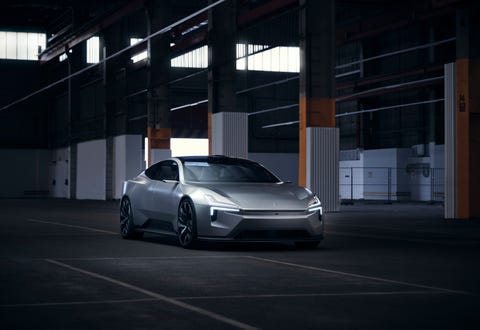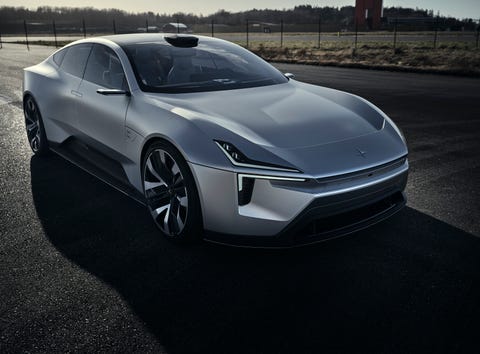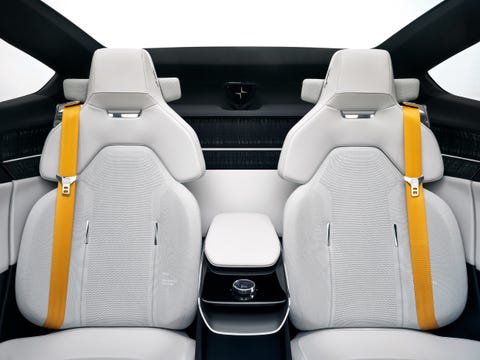Originally set to debut at the Geneva motor show last month, the Polestar Precept was going to show the world the company’s continued push toward sustainable, thoughtful vehicles. As you’re probably aware, that didn’t happen.
While the all-digital Geneva motor show did feature many of the products that we expected to see in Geneva, Polestar has now dropped an interesting deep dive into their latest concept on YouTube. Walking you through the new car is Polestar CEO Thomas Ingenlath, effectively putting you in the front row of a full-blown auto show deep-dive presentation.
The car? Well, it’s a fascinating concept that shows Polestar isn’t just interested in building the most opulent or brutally quick BEV on the planet. Instead, Polestar is pivoting into a niche that is sometimes overlooked, even by electric vehicle manufacturers: holistic sustainability. The Precept concept shows how far Polestar is willing to go with its array of recycled materials. And, if you like it: good. Polestar is saying the Precept is a “manifest of things to come” and directly points to the direction the brand is heading.
The Precept exterior retains the staples we’ve come to love and expect from sister company Volvo and, now, Polestar: Thor’s Hammer headlights; a sleek, minimalist design; and well-balanced proportions. What’s missing? Well, a grille. Because of its electric powertrain, the face of the Polestar Precept doesn’t really need a huge grille to enable air to hit heat exchangers. Instead of the faux-grille of the Polestar 2, the Precept shows off its safety and driver assistance sensor suite dubbed “the smart zone.” Oh yeah, there’s also a lidar pod on the Precept’s top, which kind of looks like a roof scoop.
Where the Precept hammers its message home is the interior. Show car interiors can be technologically or aesthetically ambitious, but they usually rely on auto interior staples: leather and plastics. The Precept takes a different approach: Instead of using traditional plastic for interior door panels, Polestar opted to use a special concoction of flax, which is highlighted by leaving it exposed like you often see with carbon fiber. The seats are covered with specially knit recycled yarn in a way that reduces waste. Even the carpet is made from PA6 that was recycled from discarded fishnets. This should go without saying, but, it’s all vegan.
The Precept’s interior also shows off some advanced tech like Google Maps integration into Polestar’s pilot assist that allows for better navigation in the driver display and a large 15-inch screen. Obviously, this isn’t new for the car world, where big screens are becoming the norm in luxury vehicles, but it’s a step forward for Polestar. Even though it’s dwarfed by Tesla’s 17-inch infotainment screen, we think it should be good enough to tell you the right information. Polestar also threw in eye-tracking technology to make sure that the driver is paying attention to that driving thing they’re supposed to be doing. Again, Polestar isn’t the first to focus on the driver’s eyes to make sure that they’re paying the correct amount of attention, but this is a good sign that Polestar’s future is concerned with continued driver integration in the driving process.
Often the case with concept cars, Polestar isn’t too keen on revealing the Precept’s powertrain at this time. We can imagine that there’s some combination of electric motors that are fed electricity by a battery pack. It doesn’t seem like Polestar is using the Precept to highlight its powertrain potential. That said, Polestar does mention that its underfloor battery layout is like what we see in the Polestar 2.
It will be interesting to see how this Polestar Precept concept translates into future production cars. Styling will be the most obvious influence, but if Polestar does continue to push environmentally conscious solutions along to the market, it might find an underserved niche.
Stay tuned: We’ll have more on the Polestar Precept later this week, including some unique insights from designers and engineers.
Source: Read Full Article



